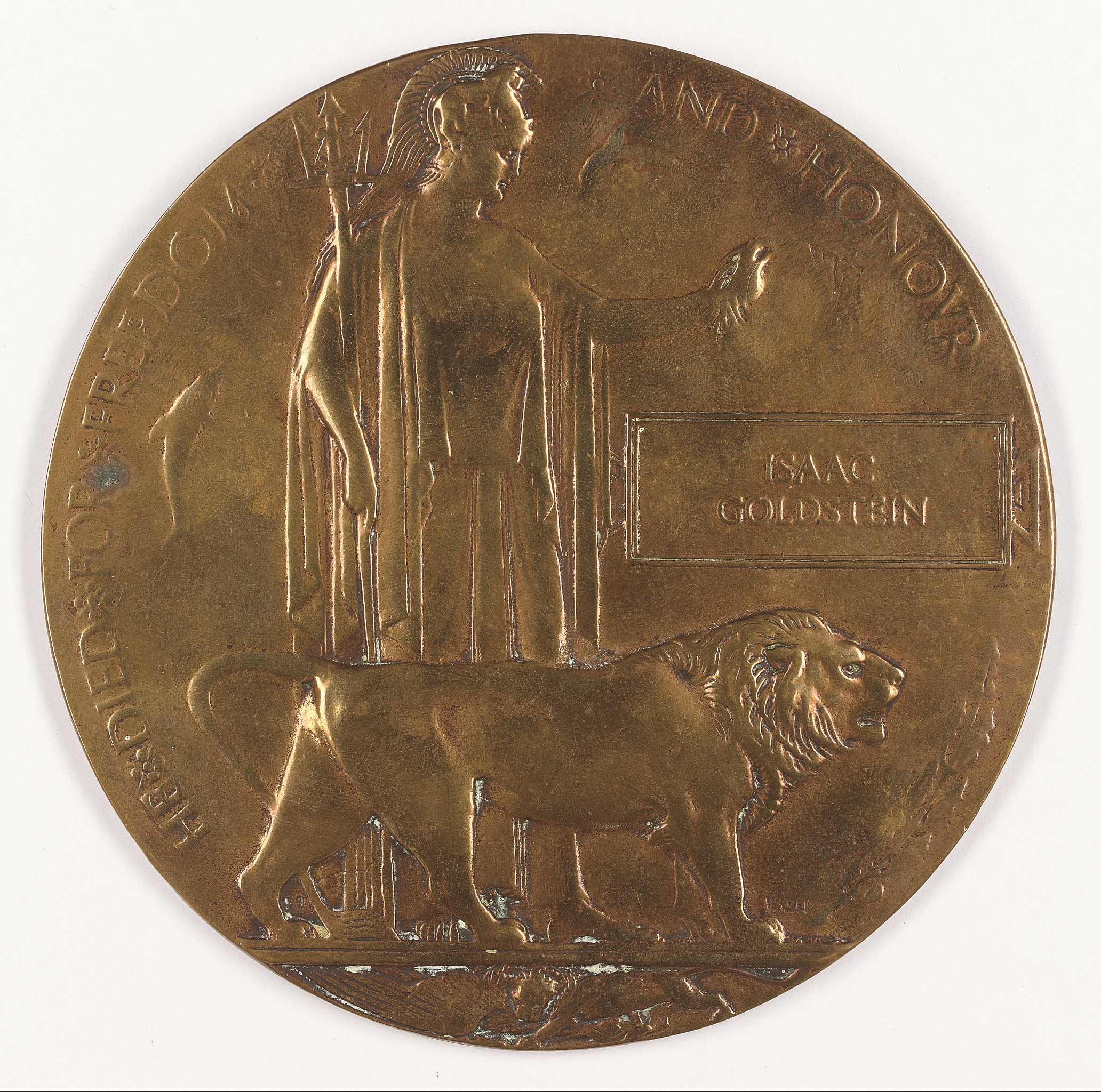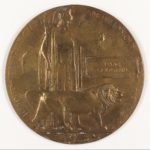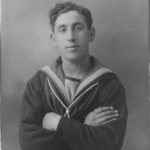Memorial Plaque
- What can we see?
We can see a figure standing behind a lion. We can also see the name ‘Isaac Goldstein’ written beside the figure.
Look closely, what can you see?
- What do we know?
This is a Memorial Plaque issued to the family of Isaac Goldstein, who died during the Battle of Jutland in World War I. Memorial plaques were given to the families of people who were killed during the First World War. There were over 1 million memorial plaques made and given to families. The plaque was sent to families with a scroll which had a message from the King written on it. The name of the person who was killed is written inside the box on each plaque.
In 1917 a competition was held to decide on the design for the plaque. The winner of the competition was Edward Carter Preston. Look closely at the front paw of the Lion to see his initials carved into the plaque.
The design on the plaque is symbolic and each part of the design has a meaning. The figure standing in the middle of the plaque is Britannia and she symbolizes the British Isles. Notice the trident in Britannia’s hand and the dolphins surrounding her. These images are symbolic of Britain’s powerful navy. Look closely at the plant that Britannia holds in her outstretched hand. This plant is a laurel wreath which is an ancient symbol of victory. Notice the Lion on the plaque. The Lion is a traditional symbol of Great Britain.
The text surrounding the image says “He died for freedom and honour.” This was a common feeling during the time of the war, that a person’s freedom and honour are values worth fighting for to protect.
- What do we wonder?
We might wonder how Isaac’s family felt when they saw this memorial? We might wonder how it was made?
What do you wonder?
- Object File
Object name: World War I Memorial Plaque for Isaac (Cecil) Goldstein
Date: 1919
Catalogue Number: 1990.178.2
Materials: BronzeArtist: Edward Carter Preston
Size: Diameter 12 cm
On display in the Jewish Museum? YesIsaac Goldstein was recruited for the Navy from his boys club in London’s East End. The Navy did not officially accept recruits who had foreign born parents, and Isaac was told not to mention that his family came from Poland when he joined. Isaac joined the Navy in the position of Able Seaman on the ship HMS Defence. He was killed during the Battle of Jutland in 1916. After his death, Isaac’s family was awarded a government pension of six shillings per week. Government pensions were given to financially help the wives and families of people who had died during the war. Isaac Goldstein is commemorated on the Chatham Naval Memorial in Kent.
There were many people killed during the First World War. The British government wanted to offer some comfort to the families of the people who were killed. The government decide to give memorial plaques to all the families. The plaques and scrolls that came with them could be displayed in the families’ homes. Because there were so many people killed during the War, the government thought the plaques would comfort the families instead of having a grave to visit.
Some families displayed the plaques proudly in their homes. Other families were angry with the government for not providing graves for their loved ones. They thought the plaques were an attempt to bribe them. They insulted the plaques and called them dead man’s pennies.


